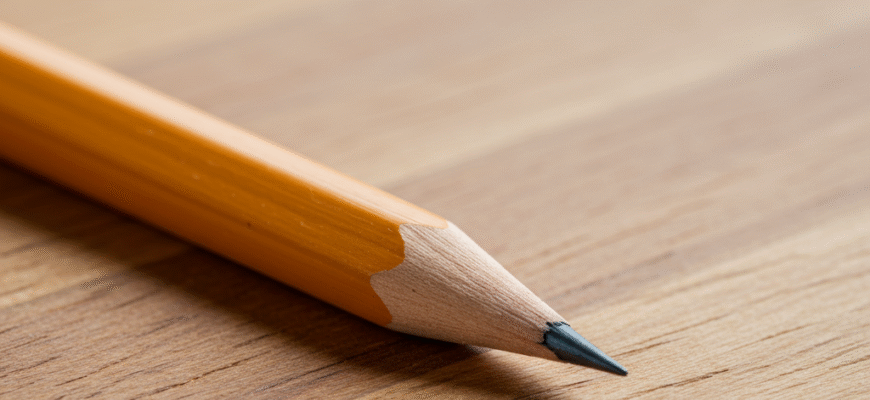Content
The Accidental Beginning: A Lump of Cumberland Graphite
Our story kicks off not with an inventor’s grand vision, but with a storm and some sheep. Sometime around the mid-16th century, legend has it that a fierce storm uprooted a large tree in Borrowdale, Cumbria, England. Nestled beneath its roots, local shepherds discovered a large deposit of a strange, dark, soft mineral. It was dark, marked easily, and felt greasy. Mistaking it for a type of lead ore, they called it “plumbago,” Latin for “that which acts like lead.” Initially, its primary use wasn’t writing. The shepherds found it perfect for marking their sheep, providing a clear, durable identifier. Its heat resistance also made it valuable for lining moulds used for casting cannonballs. Writing was a secondary, almost incidental application. People realized you could break off slivers of this “plumbago” and use them to make marks. These early ‘pencils’ were crude – just sticks of raw graphite, often wrapped in string or sheepskin to keep fingers clean and provide some structural support. They were brittle and messy, but they worked.The graphite discovered in Borrowdale was exceptionally pure and solid, unlike deposits found elsewhere later. This unique quality meant it could be sawn into sticks without needing much processing. For nearly two centuries, England held a virtual monopoly on this high-quality graphite, strictly controlling its mining and export.
Putting Wood Around It: The First Casings
Constantly wrapping graphite in string wasn’t ideal. The breakthrough came with the idea of encasing the fragile graphite stick in wood. While the exact origin is debated, Italy is often credited with the first attempts around the late 16th or early 17th century. Early methods involved hollowing out a single piece of wood, inserting the graphite stick, and sealing it. A more practical approach, developed perhaps slightly later, possibly in Germany, involved sawing two grooved wooden slats, placing the graphite stick in one groove, and gluing the other slat on top. The resulting block was then shaped, usually into a round or rectangular form. This basic principle – sandwiching the ‘lead’ between two pieces of wood – remains the foundation of pencil manufacturing today. These early wood-cased pencils were a significant improvement, offering better protection for the graphite and a cleaner user experience. However, they were still relatively expensive and relied entirely on the limited supply of pure, solid Borrowdale graphite. The quality could vary, and the pencils were still somewhat fragile.War, Necessity, and a French Chemist
The next giant leap forward came courtesy of war. During the Napoleonic Wars in the late 18th century, France found itself cut off from Britain’s precious Borrowdale graphite supply. The French military, needing a reliable writing tool, tasked inventor and chemist Nicolas-Jacques Conté with finding a solution in 1795. Conté’s genius was to figure out how to use impure, powdered graphite – something previously considered less useful. He ground the graphite into a fine powder, mixed it with varying amounts of clay powder and water, pressed the mixture into thin rods, and then fired these rods in a kiln. The result was revolutionary. Not only did this process create a usable writing core from inferior graphite, but Conté discovered something crucial: by adjusting the ratio of graphite to clay before firing, he could control the hardness and darkness of the resulting ‘lead’. More clay meant a harder, lighter mark; less clay meant a softer, darker mark. This is the basis for the pencil grading system (like HB, 2B, 4H) we still use today.The Birth of the Modern Pencil Industry
The Conté process broke England’s graphite monopoly and opened the door for widespread pencil manufacturing across Europe and eventually the world. It allowed pencil makers to use graphite deposits found elsewhere and, crucially, to create pencils tailored for specific tasks – hard leads for drafting and technical drawing, soft leads for artistic sketching, and medium leads for general writing. The 19th century saw the industrialization of pencil making. German manufacturers like Faber-Castell (founded earlier but blossoming in this era) and Staedtler became pioneers, developing machinery for mass production. They refined the process of cutting wood slats, grooving them precisely, inserting the leads, gluing, shaping, painting, and stamping. In the United States, companies like the Dixon Ticonderoga Company (famous for its yellow pencils) and the Eagle Pencil Company also emerged, further driving innovation and competition. Several key factors propelled the pencil’s rise during this period:- Mass Production: Industrial techniques dramatically lowered the cost, making pencils affordable for almost everyone, including schoolchildren.
- Standardization: The Conté process allowed for consistent quality and standardized hardness levels, making them reliable tools.
- Improved Logistics: Better transportation networks meant pencils could be easily distributed far and wide.









